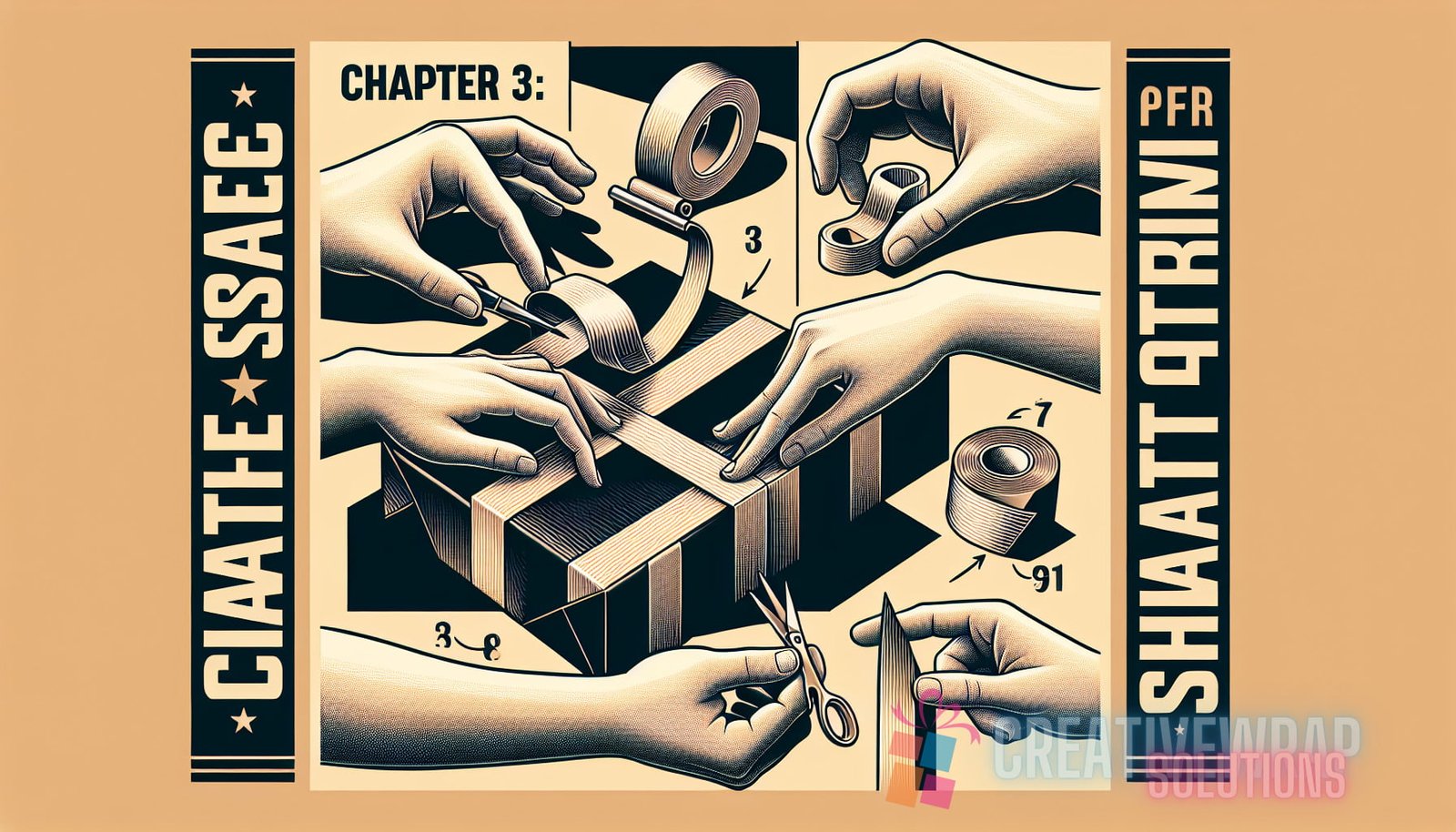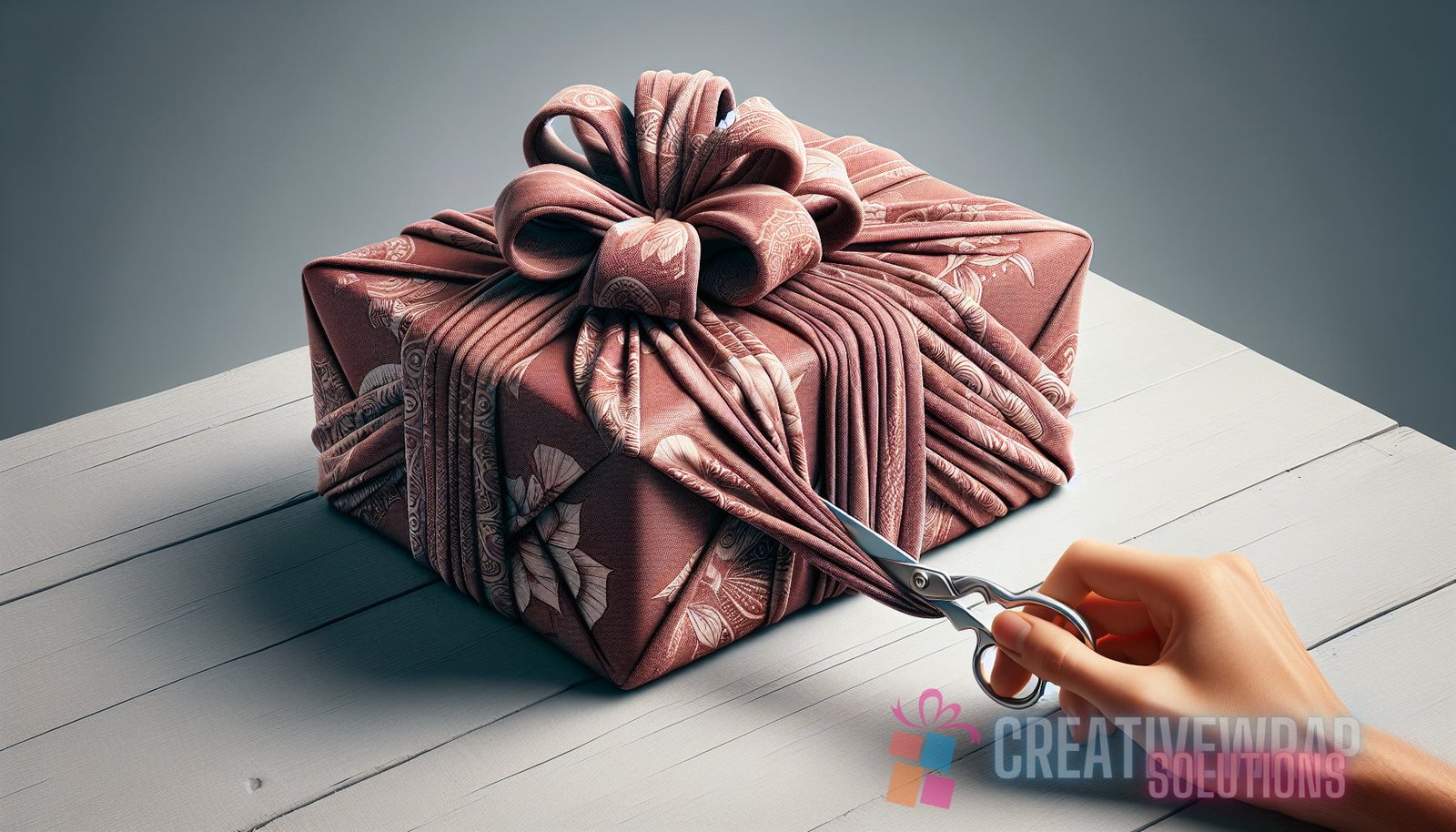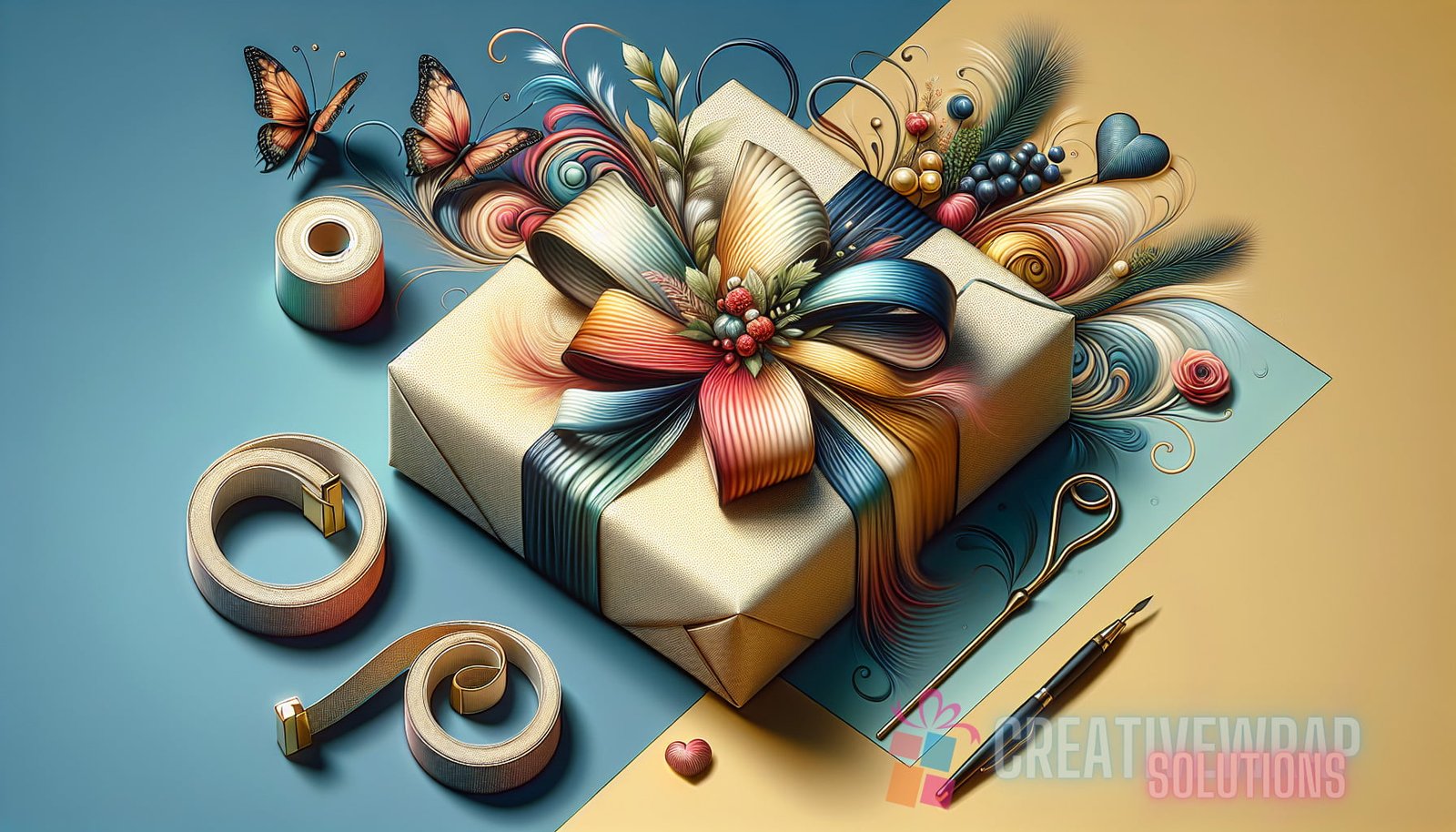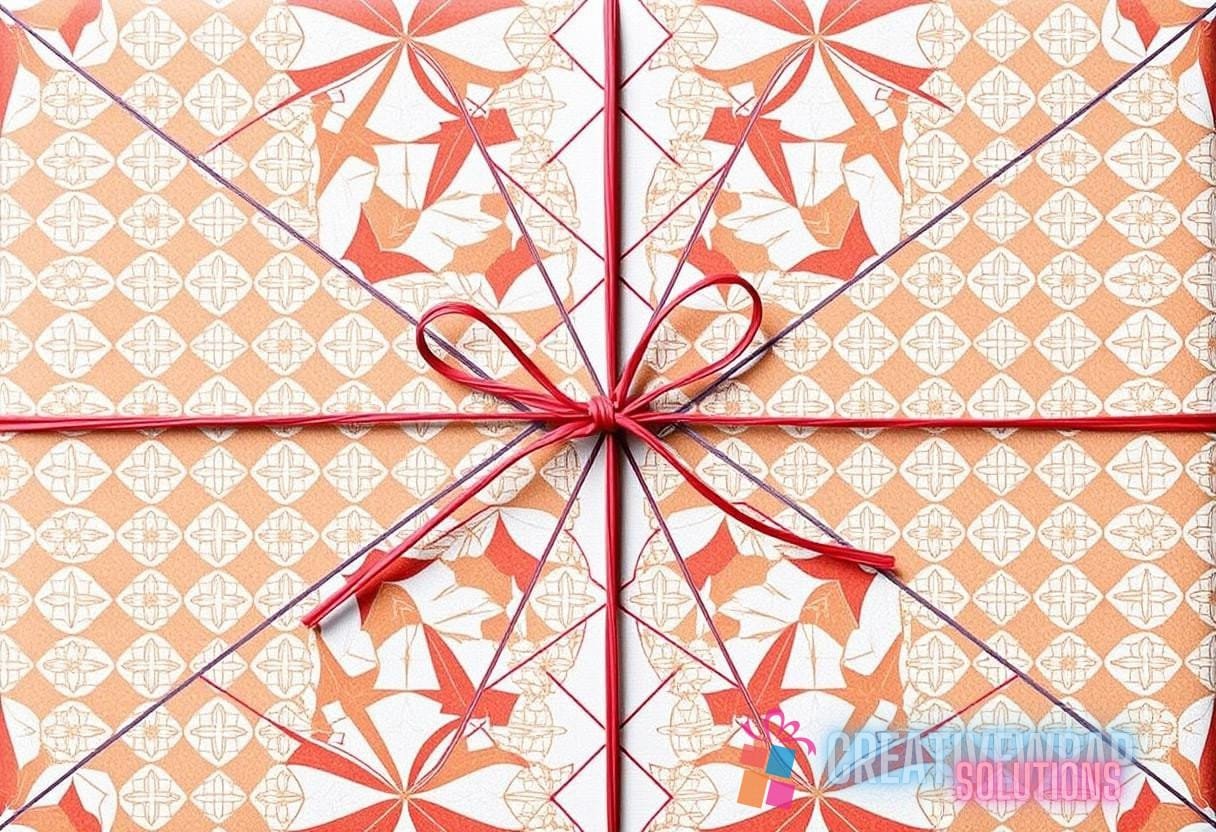Introduction
Gift giving is a cherished tradition that allows us to express our love, gratitude, and appreciation for others. While the gift itself holds great significance, the act of gift wrapping can elevate the entire experience. With the right techniques and a touch of creativity, gift wrap can become a work of art that enhances the anticipation and joy of receiving a gift.
In this guide, we will reveal the mesmerizing secrets of gift wrapping and show you how to unleash your inner artist. From choosing the perfect wrapping paper to mastering intricate bows and decorative accents, we will explore every aspect of gift presentation. Whether you’re a novice or an experienced wrapper, this guide will inspire you to take your gift wrapping skills to the next level.
Chapter 1: The Psychology of Gift Wrapping
Gift wrapping is not only about aesthetics; it also plays a significant role in shaping the recipient’s perception and emotional response to the gift. Understanding the psychology behind gift wrapping can help you choose the right techniques and materials to create a truly impactful presentation.
1.1 The Element of Surprise
One of the key reasons we wrap gifts is to build anticipation and surprise. The wrapping conceals the gift, creating a sense of mystery and excitement. Research has shown that the act of unwrapping a gift triggers a release of dopamine in the brain, the same chemical responsible for feelings of pleasure and satisfaction.
To maximize the element of surprise, consider using oversized boxes or unconventional packaging. Playful wrapping techniques, such as layering multiple sheets of wrapping paper or incorporating hidden surprises within the wrapping, can add an extra dose of excitement.
1.2 Personalization and Thoughtfulness
The way a gift is wrapped communicates the level of thought and effort put into the gift-giving process. A beautifully wrapped gift shows that you care about the recipient and have taken the time to make the presentation special.
Personalization is key when it comes to gift wrapping. Consider the recipient’s tastes, hobbies, and personality when selecting wrapping paper and decorations. Include personal touches such as handwritten notes or customized gift tags to make the presentation even more thoughtful.
1.3 Visual Appeal and Perceived Value
The visual appeal of a wrapped gift can greatly influence the recipient’s perception of its value and desirability. Studies have shown that individuals perceive a gift wrapped with care and attention to detail as more valuable compared to a poorly wrapped or unwrapped gift.
Choosing high-quality wrapping paper, coordinating colors and patterns, and neat folds can instantly elevate the overall presentation. Adding embellishments such as ribbons, bows, or floral accents further enhances the visual appeal and creates a sense of luxury.
Chapter 2: Choosing the Perfect Wrapping Paper
The choice of wrapping paper sets the stage for the entire gift presentation. It is essential to select paper that not only complements the gift but also embodies the recipient’s personality and the occasion. Here are some key factors to consider when choosing the perfect wrapping paper:
2.1 Occasion and Theme
The occasion and theme of the gift should guide your choice of wrapping paper. For a festive holiday gift, opt for paper featuring traditional colors and motifs. For a birthday gift, consider bright and playful patterns. Choosing paper that matches the recipient’s interests or reflects their personality adds a personal touch.
2.2 Quality and Texture
The quality and texture of the wrapping paper can significantly impact the overall presentation. Choose paper that is thick enough to avoid tearing easily, especially if your gift has sharp edges or corners. Consider textured papers, such as those with a matte or metallic finish, for added visual interest.
2.3 Sustainability and Eco-Friendly Options
In today’s environmentally conscious world, many individuals prefer eco-friendly wrapping options. Look for wrapping paper made from recycled materials or those that are fully recyclable or biodegradable.
Gift wrapping is not only an art form but also a way to express creativity and thoughtfulness. It dates back to ancient civilizations, where papers, fabrics, and even leaves were used to wrap valuable items. Today, there are endless possibilities for beautiful and unique gift presentations.

Chapter 3: Mastering the Art of Folding and Taping
The foundation of a well-wrapped gift lies in mastering the basics of folding and taping. Proper folding techniques ensure tidy edges and crisp corners, while precise taping keeps the wrapping secure. Follow these steps to achieve a polished and professional look:
3.1 Measuring and Cutting
Before you begin wrapping, measure the amount of paper needed by placing the gift in the center and bringing the sides up and over. Leave enough excess paper to overlap the edges and create neat folds. Cut the paper to size using sharp scissors or a rotary cutter for clean and straight edges.
3.2 Wrapping a Rectangular Box
Start by placing the box upside down on the wrapping paper, ensuring that it is centered. Bring one side of the paper up and over the box, securing it with a small piece of tape on the bottom. Repeat with the other side, folding the excess paper neatly at the corners to create clean edges. Finally, fold the remaining ends of the paper neatly and secure with tape.
3.3 Wrapping an Odd-Shaped Object
Wrapping objects with irregular shapes can be a bit more challenging. In these cases, use a few strategic folds and smaller pieces of tape to keep the wrapping secure. For complex shapes, consider using alternative methods such as bagging or boxing the gift before wrapping.
For more detailed instructions on various wrapping techniques, refer to the natural wrapping tutorial available on our website.
Chapter 4: Adding Accents and Embellishments
Once you have perfected the wrapping technique, it’s time to unleash your creativity by adding accents and embellishments. These decorative elements enhance the overall aesthetic appeal and can turn a simple gift into a stunning masterpiece. Here are some ideas to inspire you:
4.1 Ribbons and Bows
Ribbons and bows are classic gift-wrapping accessories that instantly add a touch of elegance. Experiment with different types of ribbons, such as satin, grosgrain, or velvet, to match the occasion and wrapping paper. Consider using a bow maker tool or following online tutorials to create perfectly shaped bows.
4.2 Tags and Gift Toppers
Gift tags are not only practical for labeling presents but also serve as decorative elements. Choose tags that complement the wrapping paper and consider personalizing them with the recipient’s name or a heartfelt message. Explore unique gift toppers such as dried flowers, feathers, or small ornaments to add a whimsical touch.
4.3 Stickers and Washi Tape
For a fun and playful look, incorporate stickers or decorative washi tape into your gift wrapping. Create patterns or designs on the wrapping paper using colorful tape or use stickers to add a personalized touch. Washi tape can also be used to secure folds or cover unsightly tape seams.
For more advanced techniques on illusionary gift wrapping, refer to the tutorial available on our website, titled “Master the Art of Illusionary Gift Wrapping with This Ultimate Guide”.
Chapter 5: Wrapping Techniques for Challenging Shapes
Not all gifts come neatly packaged in a rectangular box. Wrapping objects with challenging shapes requires alternative techniques to ensure a polished presentation. Here are some strategies for tackling common gift shapes:
5.1 Cylindrical Objects
For cylindrical objects such as bottles or rolled-up clothing, consider using fabric or paper sleeves. Measure the circumference of the object and cut a piece of fabric or paper that covers the entire length. Secure the ends tightly with ribbons or wrap the entire sleeve with decorative twine or string.
5.2 Bulky or Awkwardly Shaped Gifts

Gifts that are bulky or have irregular shapes can be challenging to wrap neatly. Instead of struggling with traditional wrapping paper, opt for alternative wrapping methods. Consider using a decorative cloth or scarf to wrap the gift, tying the ends in an intricate knot or bow.
For step-by-step instructions on various wrapping techniques, visit our website and explore our comprehensive tutorials.
Chapter 6: Creative Gift Presentation Ideas
Take your gift wrapping skills to the next level by exploring creative presentation ideas that go beyond traditional wrapping paper. These methods will delight and surprise recipients, making the gift-giving experience even more memorable.
6.1 Gift Baskets or Hampers
Gift baskets or hampers are a fantastic way to present multiple items in an elegant and organized manner. Choose a theme for the basket, such as a spa day or gourmet treats, and carefully arrange the items inside. Wrap the entire basket with clear cellophane and secure with a large bow or ribbon.
6.2 Gift Boxes
Gift boxes are a versatile option that allows for creative presentation and customization. Choose a beautifully designed box that complements the gift’s theme or the recipient’s interests. Fill the box with tissue paper or crinkle-cut paper for added cushioning and a luxurious touch.
6.3 Fabric Wrapping
Fabric wrapping, also known as furoshiki, is a traditional Japanese method that uses fabric to wrap gifts. It is not only eco-friendly but also provides a unique and visually appealing presentation. Experiment with different types of fabric, such as scarves or tea towels, for a personalized touch.
6.4 Edible Wrapping
For food-related gifts, consider using edible wrapping options to enhance the overall presentation. Wrap baked goods in clear cellophane and tie with a colorful ribbon, or package homemade jams and sauces in glass jars sealed with fabric or paper covers.
By adopting these creative presentation ideas, your gifts will stand out and leave a lasting impression on the recipients.
Chapter 7: Practical Tips and Tricks
To further enhance your gift wrapping skills, here are some practical tips and tricks that professionals use to achieve flawless presentations:
7.1 Use Double-Sided Tape
Double-sided tape is a game-changer when it comes to clean and seamless wrapping. Use it to secure the edges and folds of the wrapping paper without leaving visible marks or bumps.
7.2 Invest in Quality Tools
Investing in high-quality tools, such as sharp scissors, a bone folder, and a tape dispenser, can make a world of difference in achieving professional-looking results. These tools ensure clean cuts, precise folds, and efficient tape application.
7.3 Practice Makes Perfect
Mastering the art of gift wrapping takes practice. Set aside time to experiment with different techniques, try new styles, and refine your skills. Take advantage of online tutorials and resources to learn new techniques and stay inspired.
Conclusion
Gift wrapping is not just a mundane task; it is an opportunity to showcase your creativity and thoughtfulness. By following the techniques and tips outlined in this guide, you will unlock the artistic secrets of mesmerizing gift presentation. Remember to choose the perfect wrapping paper, master the folding and taping techniques, and add personalized accents and embellishments. With practice and a touch of creativity, your gift presentations will become works of art that leave a lasting impression on the recipients.
Visit our website for more tutorials and inspiration at Creative Wrap Solutions.



